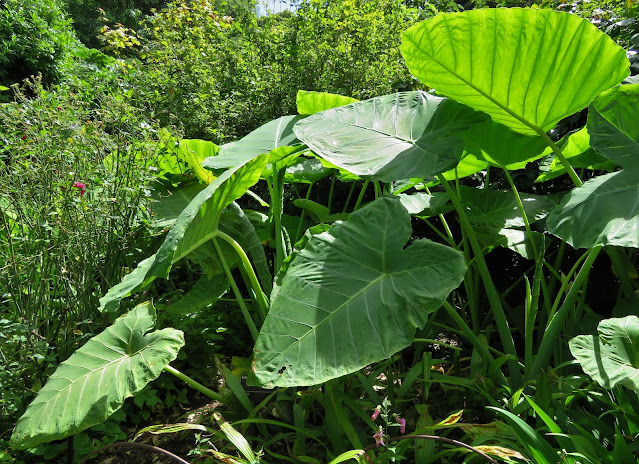Giant Elephant Ears and much more
The Giant Elephant Ear, Colocasia gigantea, also known as Indian Taro or Thailand Giant, is from valley forests in China and other parts of South-east Asia (not as far as I know, originally from India).
Its leaves can be two metres long and almost as wide. A cultivar called 'Thailand Giant Strain' is said to produce the largest leaves in cultivation.
We grow the species all over Melbourne Gardens, but the best specimen is in our Southern China Collection, in the garden bed near the Director's Honour Roll (where the names of the thirteen heads of Royal Botanic Garden Victoria are etched into concrete).
It's grown mostly for the enormous leaves but, as Neville Walsh said as we passed by it the other day, there is a lot to be impressed by. The crinkled new leaves are wrapped tightly like a unfurled flag for starters.
And then, those big leaves, here offset against a nearby giant bunya pine
Although one common name includes the word taro, the underground stem (or tuber) is apparently stringy and inedible.
The botanical name is interesting. Not so much the species epithet which simply refers to the large size of the plant, but the genus name, which is based on the Ancient Greek word 'kolokasia'. Kolokasia was used by the Greeks for the tuber of the lotus, Nelumbo nucifera.
So how did that word end up in the genus name for the elephant-ear genus, Colocasia? Probably thanks to one of the 20 or so species, Colocasia esculenta, the edible taro. It's likely that the Greeks - including the physician and botanist Disocorides. writing in the first century - use the same word for the underground parts of the taro and the lotus.
Our 'not-lotus' might look like it needs a decent amount of water, which it does, but also a well drained soil. If you have a spare square metre or two of space, and ready source of irrigation, to give it a go.






Comments